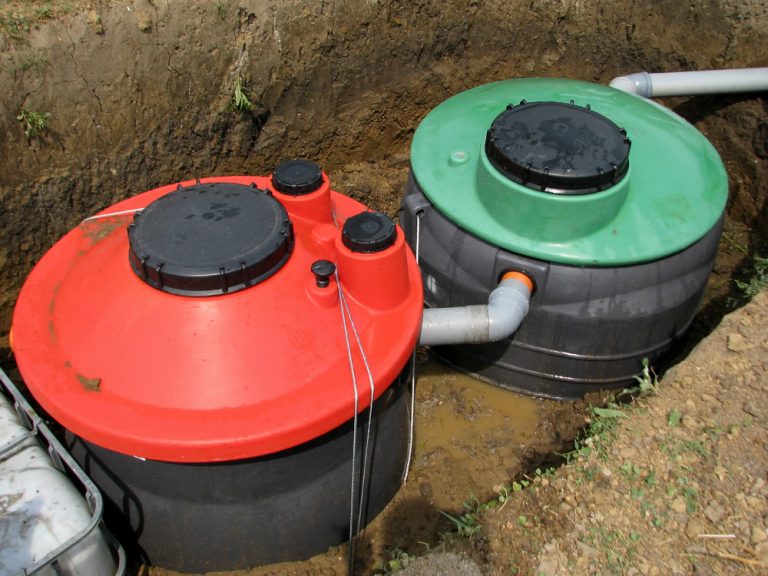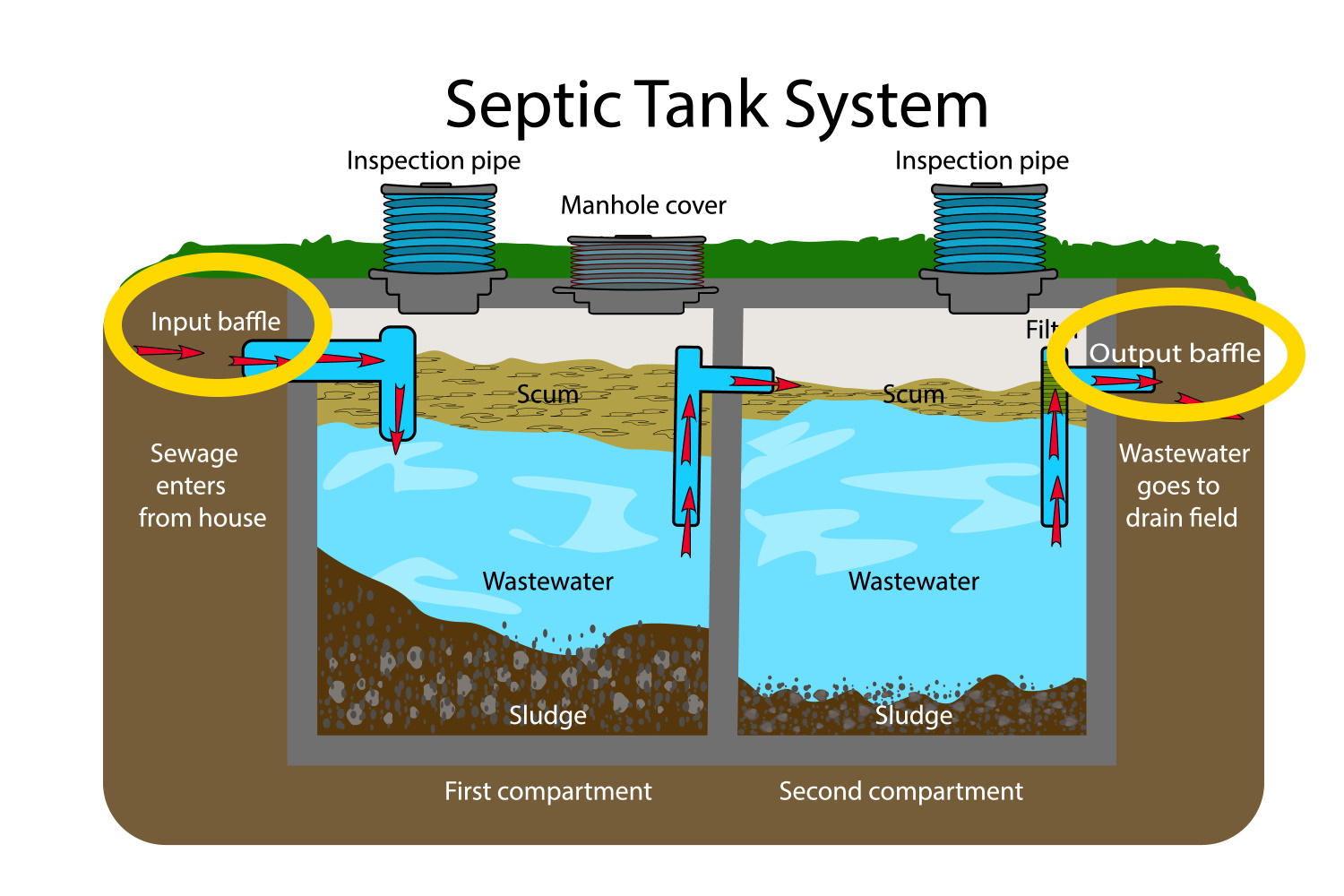A septic system’s job seems like a simple one: separate liquids and solids then hold the solids in the tank until they are pumped out to a drain field.
However, the actual system is a bit more complicated and requires a lot of components to ensure the job is complete.
Even the simplest standard septic tanks have parts that need to be inspected and replaced over time. One such component is the baffle which actually exists in two parts: the inlet baffle and the outlet baffle.
If you’re curious as to what a septic tank baffle is and how it works, keep reading to learn more:
What Does a Septic Tank Baffle Do?
Septic tank baffles can be found at the junctions of your septic system where the pipes enter and exit the tank. There are, in fact, two baffles: one located at the inlet pipe and one at the outlet pipe.
The outlet baffle at the outlet pipe is the most important baffle since it keeps solids from exiting the tank and getting into the drain field. If solids make it to the drain field, they could clog up and destroy the system.
The inlet baffle rests between the septic tank and the main sewer line that leads away from the house. It helps wastewater flow smoothly into the tank without disruption to the scum layer.
It also guides the wastewater across the septic tank, allowing the water more time to separate.
What Are the Different Types of Baffles?
Septic baffles can be broken down into two categories.
Septic baffles can be broken down into two categories.
Older septic tanks made from concrete tend to contain wall waffles that are also made of concrete and built directly into the side of the tank. They allow more space for incoming solids and help reduce the risk of clogs.
Wall baffles are becoming less common as contractors are moving more toward the use of sanitary tees, the second type of baffle.
Sanitary tees are made of plastic and are shaped in a way that reduces the risks of clogs. They can also accommodate effluent screens that help prevent solids from moving into the drain field.
What is a Septic Tank Baffle Made Of?
As we mentioned above, baffles can be made of concrete or plastic. Newer models are commonly made of plastic such as ABS (thermoplastic polymer) and tend to last longer than concrete baffles.
Outlet baffles often include an interior effluent filter to keep solids away from the drain field but these have to be replaced on a regular basis (which is a small price to pay compared to replacing your entire drain field!).
What Happens if the Septic Tank Baffle Malfunctions?
Concrete baffles, especially concrete outlet baffles, are known to crumble after a number of years due to their long exposure to corrosive gases. If your system has concrete baffles, have them inspected every time your tank is pumped out.
Baffles can only be replaced when your septic tank is empty, so checking them when the tank is pumped is the perfect opportunity to have them replaced if needed.
Other baffle issues include clogged baffles, leaks around the baffle, and inlet baffle blockages. Baffle blockages can occur if wipes or solids are flushed down the toilet or if tree roots grow through the inlet pipe or around the baffle.
Overall, if your septic tank baffles malfunction or are damaged, the life of your drain field will be considerably shortened.
Here are some signs that your septic system has a bad baffle:
- Sewage puddles in your yard
- A strong smell of sewage on your property
- Waste backup in your home
- Clogged drains
- Damage to your drain field
How Can I Maintain My Septic Tank Baffle?
When you have your septic system pumped or inspected, have a professional sewer technician take a look at your outlet baffle and inlet baffle. They can assess whether the baffles are in place and in good condition.
If they find that your baffles are deteriorating, or not there at all, they can replace the baffles and help extend the life of your septic system.
Of course, preventative maintenance goes a long way! Be careful what you flush down your toilet.
Objects such as wipes, paper towels, and other items not meant for your toilet can cause your baffles to clog and lead to unnecessary repairs.
Are Septic Tank Baffles Expensive to Replace?
The cost of replacing a septic tank baffle can vary but the average cost is around $100-$300.
The actual cost can depend on a variety of factors such as what septic company you are dealing with, the type of baffle, and local baffle replacement requirements.
Other factors that can influence the cost include the type of soil around your home, the time of year, and how urgent you need the baffle replaced.
Can I Replace a Septic Tank Baffle Myself?
Because your septic system is an intricate one, it’s always best to leave repairs and replacements to the professionals.
However, it is possible to inspect the baffle yourself but this involves digging up the access hatches to your septic tank and having the system pumped by a professional.
Since you need a professional technician to empty your system to inspect your baffles, it would make sense to have the technician do the inspection for you!
Don’t Be Baffled By Your Septic System!
These basics about baffles will help you understand how they work and why they are important!
For more information about baffles, or for baffle repairs and replacements, don’t hesitate to contact Peak Sewer and Underground Services.
Our 24/7 emergency services and immediate response provide peace of mind so that your Edmonton home never has to be without a septic system.
Our experienced technicians can help you out with septic system repairs, pumping, and other maintenance tasks. We also perform septic inspections and installation.


